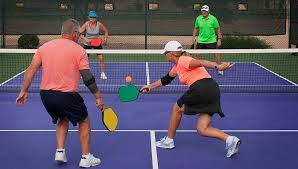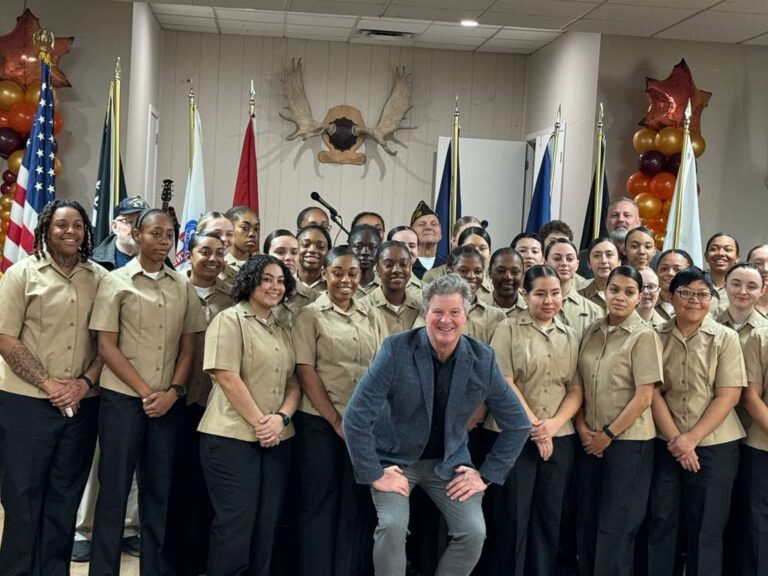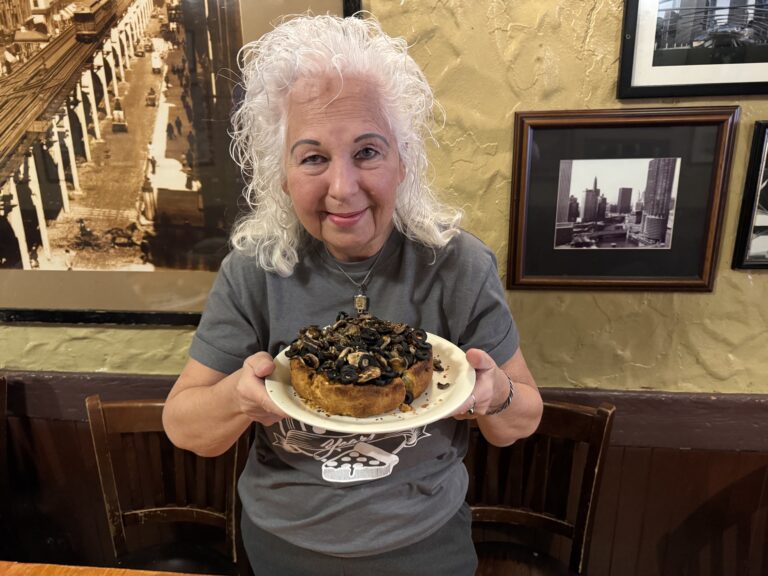You have probably encountered them while driving through your neighborhood or exercising at your health club: Four over 55-year-olds furiously engaged in, what, exactly? It’s not tennis, nor badminton, nor even ping-pong. It’s something else.
Welcome to pickleball.
Dubbed “the fastest growing sport for people whose bodies are too broken to play anything else,” pickleball is popping up everywhere, and making national headlines while doing so. New, wealthy residents in active retirement communities are sparring with older residents over whether to install pickleball courts.
On its website, the USA Pickleball Association — yeah, that’s a thing — boasts more than 200,000 members and estimates 76 new pickleball venues are created each month. And those are 2016 figures. Just look out your window. Chances are construction crews are digging a Pickleball court on your front lawn and four senior citizens are lingering nearby, with one calling, “We’ve got next!”
If your athletic history includes any sport involving a racket — squash, racquetball or, in my case, tennis — you should be able to perform admirably at pickleball. I discovered this when I went to my local park district to see what the fuss was about. For a few hours three days a week, management converts two basketball courts into four pickleball courts, giving basketball players a breather and a chance to laugh at middle-aged men and women flailing at a colored whiffle ball while saying, “Marv, I believe you were in the kitchen.” More about that later.
Pickleball begins with two players, or four if you’re playing doubles, meeting at the net and revealing what physical malady drove them to take up the sport. “Torn hip muscle,” “Achilles surgery” and “strained elbow” were plaguing my three partners.
“Bone spurs in my foot,” I said proudly, while raising my pickleball paddle. That was the truth, although, if perfectly healthy, I would have created a non-existent ailment for fear of being ostracized. The other three glanced at my shoes and seemed to accept my condition, as sides were chosen and it was time to play pickleball.
A Pickleball court is 20 feet by 44 feet with a 3-foot-high net separating each side. The serving team hits the ball over the net, and the receiving team must let the ball bounce before returning it; the serving team must also return the ball on the bounce and then anything goes.
Chip it at your opponent’s feet, lob over their heads or, if your elbow doesn’t hurt too much, whack it out of the air while aiming directly for their midsections. Incidentally, connecting with a floating pickleball is easier said than done, as tennis players like me will attest. I whiffed several times during my first match, eliciting even more laughter from the basketball players.
Then there’s the aforementioned kitchen, a non-volley zone extending 7 feet from the net. Players can go into the kitchen to retrieve a ball on the bounce but then must retreat. Under no circumstances can a player hit the ball on the fly while standing in the kitchen. Although stats on the USAPA site weren’t available, I’d estimate 90 percent of pickleball arguments stemmed from whether a player was, illegally, in the kitchen.
Pickleball games end when one player, or team, reaches 11 points. Opponents meet at the net, bump paddle handles as opposed to shaking hands, and breathe sighs of relief if their bodies are still intact. Despite my initial thinking that pickleball was not actually exercise, I was sweating profusely after a 90-minute session. I was also the recipient of several compliments, most beginning with, “You’re a tennis player, aren’t you?”
Although I don’t consider myself to be hooked on pickleball, my paddle now sits alongside my tennis racket, a reminder that, even with aching feet, I can still participate in athletics. If another injury makes pickleball too physically cumbersome, I don’t know what I’m going to do.
Bowling anyone?




